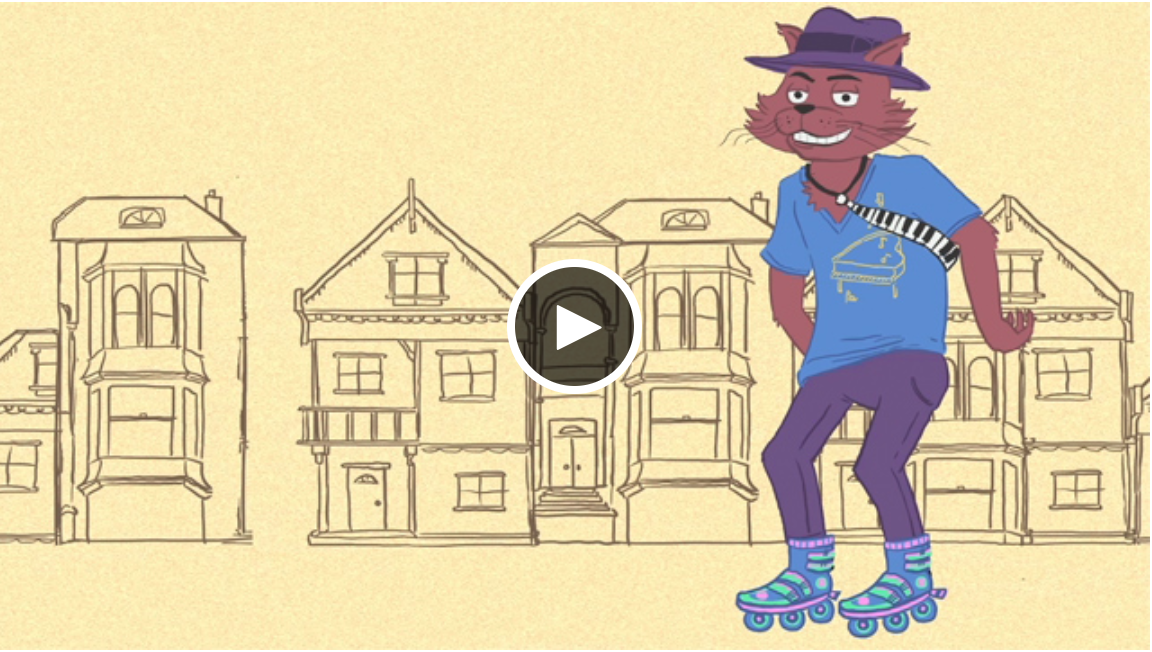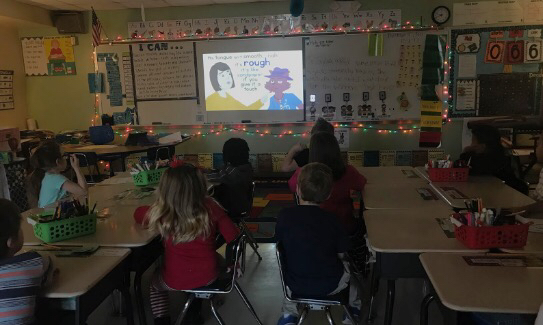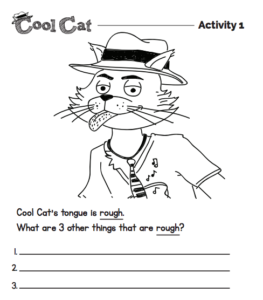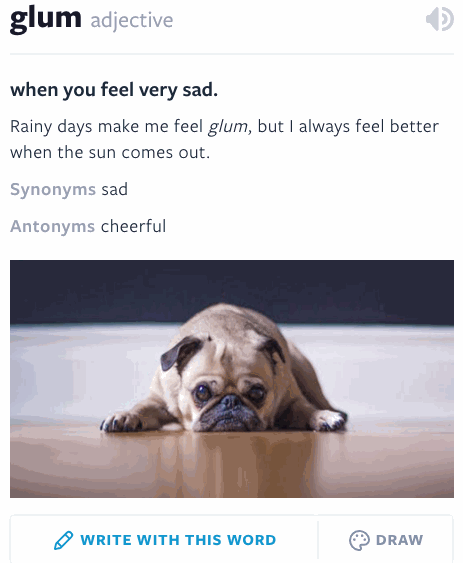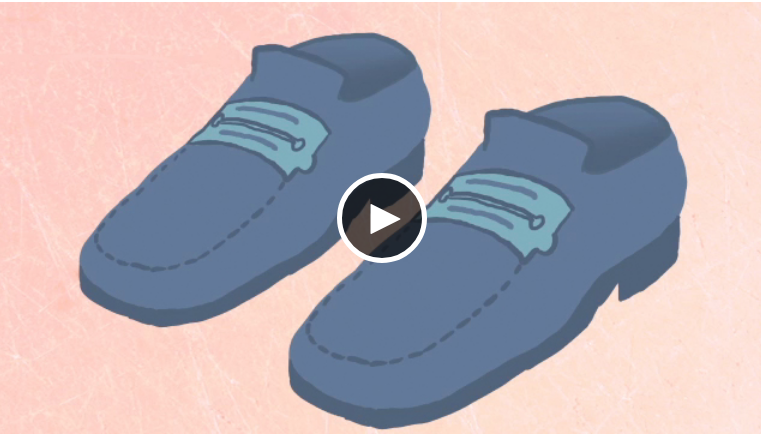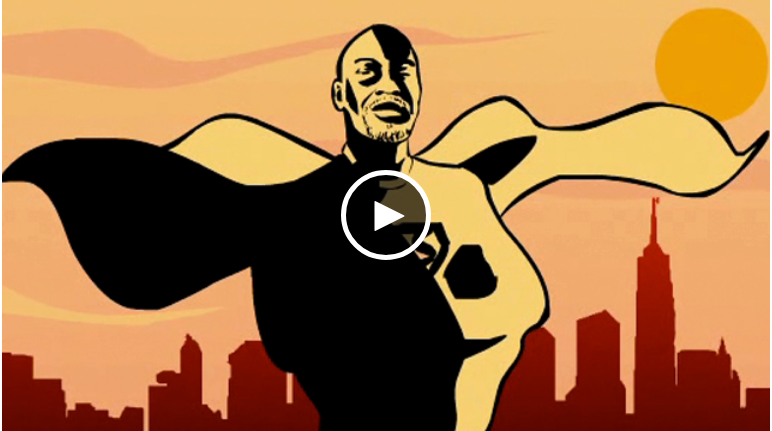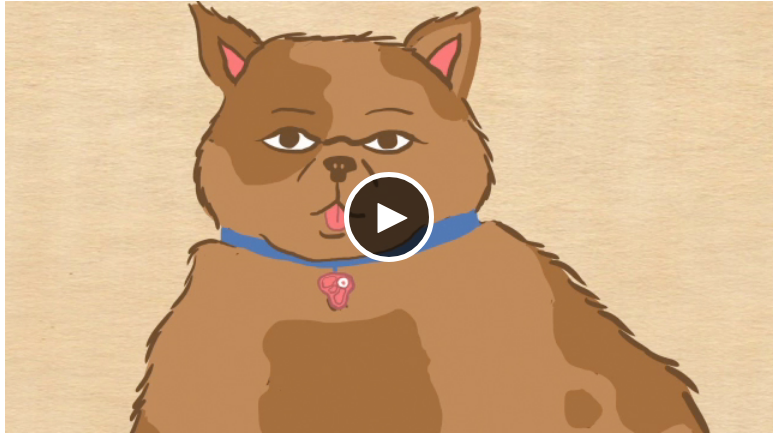
How I Use “Word Up” In My Elementary Classroom
If you need a fun way to integrate vocabulary into your instruction, look no further! Word Up is a research-based, standards-aligned resource that is proven to raise scores on state reading tests. My students absolutely adore being able to sing and dance along with the lessons.
Besides the catchy songs and beats, one of the best features is the lyrics on screen. The lyrics are on every video, and help students recognize the words they are singing. They also aid ELL students. By the end of each video, my students can sing the songs by heart and often beg to revisit their favorites.
Flocabulary has become a daily part of my broader vocabulary instruction. Here are the steps I use in my classroom in order to integrate vocabulary in a fun, exciting way.
Step 1: Preview New Words
Before I introduce a new Word Up lesson to my students, I write the new Flocabulary vocab words on our class word wall. Our word wall is color coded (a concept from Dr. Max Thompson), and we use orange for our Flocabulary vocabulary words.
Step 2: Introduce New Words
On Mondays I start a new unit. I like to use each unit for 2 weeks, focusing on half of the vocabulary words the first week and the other words the second week.
Something I love about the Word Up lessons is the versatility they have in the classroom. At the end or the beginning of our literacy block, I show the Word Up video to the students as a hook, to transition or use it as a brain break.
Step 3: Activities in Word Work Stations
After I introduce the video, I inform the students of the new handouts they have for their word work stations. As part of our reading curriculum, we use “Daily 5: Fostering Literacy in Elementary Grades“ by Gail Boushey and Joan Moser. “Daily 5” allows student choice in their learning. For the word work station, students have the option of completing a Flocabulary vocab handout in addition to practicing their weekly core words.
Students are able to practice on individual dry erase boards, the large dry erase board with a partner and even do a rolling dice rainbow word activity alongside completing work in their “Daily 5” notebooks. Once students finish one activity, they are able to select another one. Students also have a choice to sit where they feel the most comfortable during their 15-minute station.
Step 4: Reinforce with Vocab Cards
On the second day of showing the video, we use Flocabulary’s vocab cards. Students repeat the word after me, then we discuss the definition and the sentence. During this time, I ask students to connect to the words, or give examples of them in a sentence.
Step 6: Practice in the Real World
Towards the end of each week, we view the Word Up lesson again with Discuss Mode. I challenge the students to try to use a new word in their writing stations and when they speak to their peers. I’ll add a marble to our class marble reward jar or allow a student to move their behavior clip up on the chart for trying and challenging themselves.
Step 7: Usage and Mastery
Repeat steps 2-6 with the second set of Flocabulary vocabulary words to complete the video within the second week! Using these steps fosters engagement while reinforcing usage and mastery.
[Tweet “Using Word Up has boosted my students’ confidence”]
Using Word Up has boosted my students’ confidence and their reading abilities. They are able to problem solve and look for context clues to uncover unknown vocabulary words. Every week, a student points out a Flocabulary word they recognize. Word Up makes them excited to learn new words and discover them in the books they read!
Word Up is a comprehensive resource for teaching Tier 2 and Tier 3 vocabulary words for all grade levels. Word Up lessons also provide students with reading and oral comprehension, grammar and literary analysis skills.


